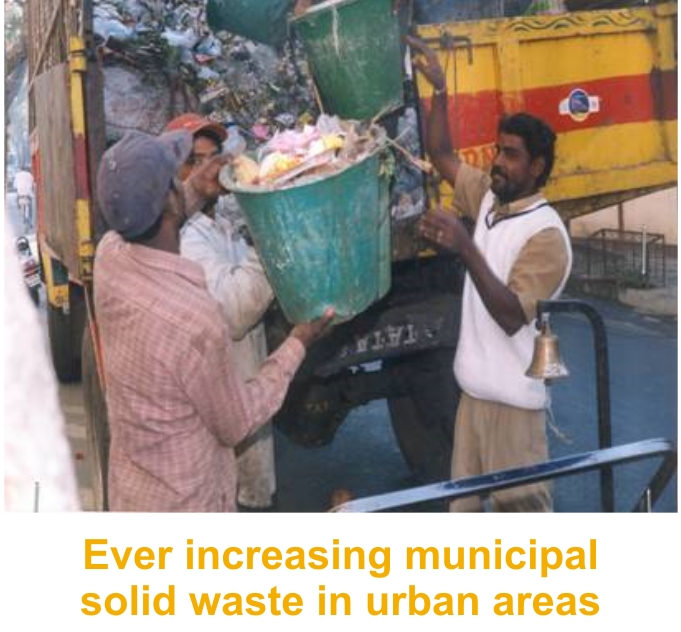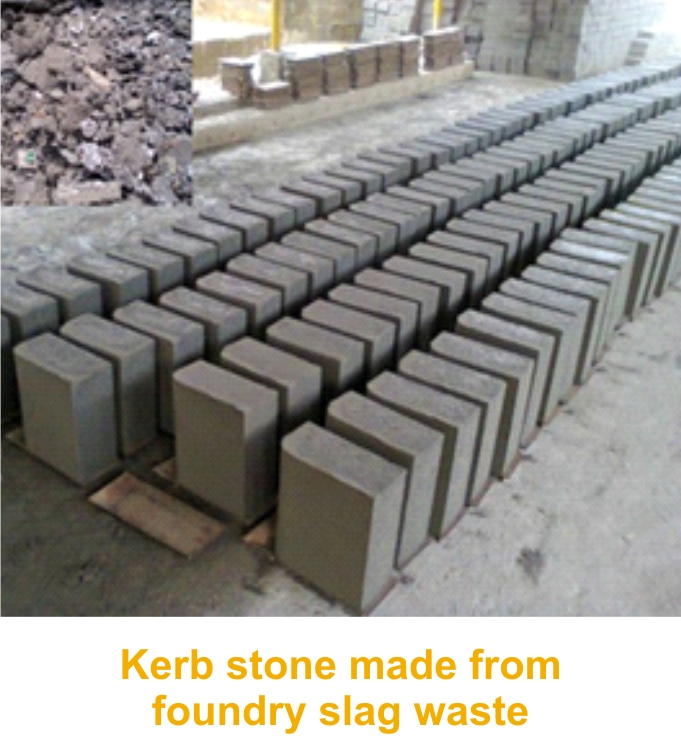|
Waste Matters 'Wastes' are substances or objects, which are disposed of or are intended to be disposed of or are required to be disposed of by the provisions of national law.1 Impacts of Waste Generation Effects on the environment: Waste results in accumulation of greenhouse gases (GHGs) primarily Carbon Dioxide (CO2), Methane (CH4) and Nitrous Oxide (N2O) which are responsible for global warming and climate change. CO2 is released into the atmosphere by the burning of solid waste. CH4 is emitted from the decomposition of organic waste in landfills. NO2 is emitted during combustion of solid waste. Rising global temperatures are expected to raise sea levels and change precipitation and other local climate conditions. Scientists predict that there is likely to be an overall trend towards increased precipitation and evaporation, more intense rainstorms and drier soil. Changing regional climates are expected to alter forests, crop yields and water supplies. This could also affect human health, animals and many types of ecosystems. Deserts might expand into existing rangelands and features of some of our national parks might be permanently altered. Effects on health: Waste creates toxicity and chemical poisoning through chemical inhalation resulting in low birth weight, cancer, congenital malformations, neurological diseases etc. Effects on flora and fauna: Waste degrades water and soil quality. It breaks down in landfills to form methane, a potent source of greenhouse gas which is very harmful to flora and fauna. Classification of wastes The waste generated can be classified in different ways based on various factors like origin, biocompatibility, hazardous behavior etc. According to source/origin:
According to biocompatibility:
According to their effects on human health and environment:
National and Global Scenarios of Waste Generation Current global municipal solid waste generation levels are approximately 1.3 billion tonnes per year and are expected to increase to approximately 2.2 billion tonnes per year by 2025. This represents a significant increase in per capita waste generation rate, from 1.2 to 1.42 kg per person per day in the next fifteen years. However, global averages are broad estimates only as rates vary considerably by regions, countries and even within cities. MSW generation rates are usually influenced by economic development, degree of industrialisation, public habits and local climate. Generally, higher the economic development and rate of urbanisation, the greater is the amount of solid waste produced. Income level and urbanisation are highly correlated. With increasing disposable incomes and living standards, consumption of goods and services correspondingly increases, as does the amount of waste generated. Urban residents produce about twice as much waste as their rural counter parts.2 Nearly 62 million tonnes of total waste is generated annually in India.3 Out of this, plastic waste is 5.6 million tonnes, biomedical waste is 0.17 million tonnes, hazardous waste is 7.90 million tonnes and e waste is 1.5 million tonnes. Consequently, per capita waste generation in Indian cities ranges from 200 grams to 600 grams per day. MoEF has also forecasted that waste generation will increase from 62 million tonnes to about 165 million tonnes by 2030.
Utilisation of waste Waste management is the process by which waste products emerging from daily human activities are collected, segregated and then processed. Human activities in a day produce a large amount of waste. Waste should be managed effectively to preserve the environment and protect natural resources. Recycling is an integral part of any waste management system as it represents a key utilisation alternative for reuse and energy recovery. Reuse requires a minimum functionality that reconditioning can be accomplished within certain costs and time limits. Recycling only requires a single material waste stream of acceptable purity and a WTE facility is able to process any waste for energy recovery as long as it is not contaminated with hazardous substances. To meet these requirements the different waste streams (e.g., municipal solid waste, industrial waste, pharmaceutical waste, etc.) must be treated differently. The rise or fall of a waste management system highly depends on the support of the residents and employees. They take the first step in a long chain of processes by separating their waste stream in direct reusable or recyclable waste streams (e.g., paper, plastics, glass, etc.) and waste that can be used as a fuel for energy recovery. Solid waste management rules have been revised by MoEF. The concept of partnership with Swachh Bharat has been introduced. Bulk and institutional generators, market associations, event organisers, hotels and restaurants have been made directly responsible for segregation and sorting the wastes in partnership with local bodies. Life-Cycle Assessments (LCA) can help to decide whether it is sustainable either to reuse or recycle certain waste streams or to recover the energy only. LCA is a comparative methodology used to determine the environmental impact and energy or resource consumption of products and services over their whole life cycle (extraction of the raw materials, production of the product itself, use of the product and treatment after disposal as waste). Any utilisation strategy that consumes more resources and energy or has a greater environmental impact than the initial production from primary raw materials is considered 'non-sustainable'. In order to achieve higher resource efficiency, significant efforts have been made to utilise various mining and industrial wastes as raw material for building products. The area of waste-utilisation has thus revealed a new dimension of modern scientific research. ■
Palas Kumar Haldar
Endnotes
|
 er,
wood, fruits, natural organic substances etc.)
er,
wood, fruits, natural organic substances etc.)